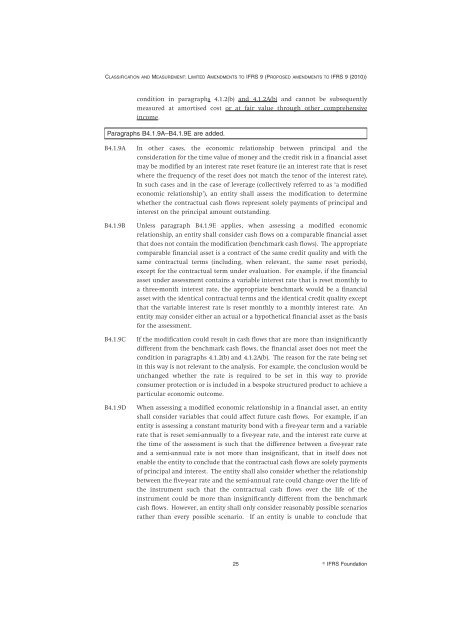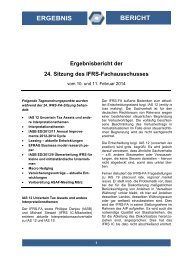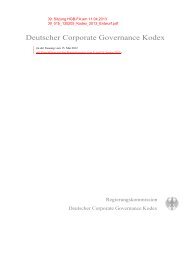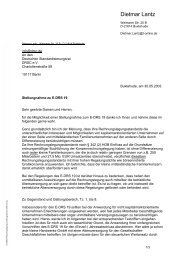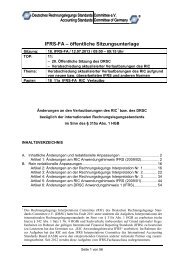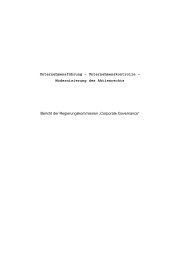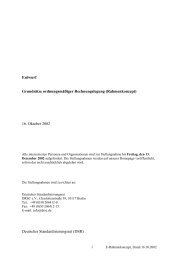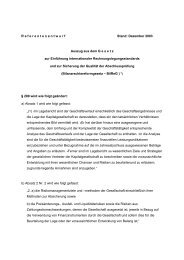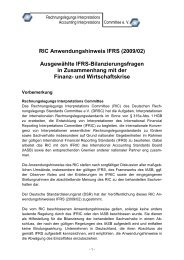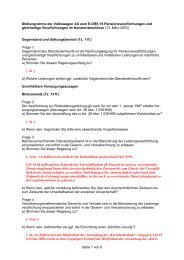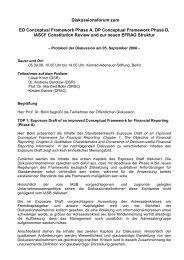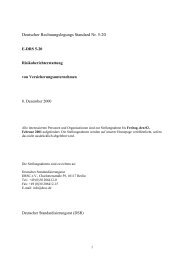Classification and Measurement: Limited Amendments to IFRS 9
Classification and Measurement: Limited Amendments to IFRS 9
Classification and Measurement: Limited Amendments to IFRS 9
You also want an ePaper? Increase the reach of your titles
YUMPU automatically turns print PDFs into web optimized ePapers that Google loves.
CLASSIFICATION AND MEASUREMENT: LIMITED AMENDMENTS TO <strong>IFRS</strong> 9 (PROPOSED AMENDMENTS TO <strong>IFRS</strong> 9 (2010))<br />
condition in paragraphs 4.1.2(b) <strong>and</strong> 4.1.2A(b) <strong>and</strong> cannot be subsequently<br />
measured at amortised cost or at fair value through other comprehensive<br />
income.<br />
Paragraphs B4.1.9A–B4.1.9E are added.<br />
B4.1.9A In other cases, the economic relationship between principal <strong>and</strong> the<br />
consideration for the time value of money <strong>and</strong> the credit risk in a financial asset<br />
may be modified by an interest rate reset feature (ie an interest rate that is reset<br />
where the frequency of the reset does not match the tenor of the interest rate).<br />
In such cases <strong>and</strong> in the case of leverage (collectively referred <strong>to</strong> as ‘a modified<br />
economic relationship’), an entity shall assess the modification <strong>to</strong> determine<br />
whether the contractual cash flows represent solely payments of principal <strong>and</strong><br />
interest on the principal amount outst<strong>and</strong>ing.<br />
B4.1.9B Unless paragraph B4.1.9E applies, when assessing a modified economic<br />
relationship, an entity shall consider cash flows on a comparable financial asset<br />
that does not contain the modification (benchmark cash flows). The appropriate<br />
comparable financial asset is a contract of the same credit quality <strong>and</strong> with the<br />
same contractual terms (including, when relevant, the same reset periods),<br />
except for the contractual term under evaluation. For example, if the financial<br />
asset under assessment contains a variable interest rate that is reset monthly <strong>to</strong><br />
a three-month interest rate, the appropriate benchmark would be a financial<br />
asset with the identical contractual terms <strong>and</strong> the identical credit quality except<br />
that the variable interest rate is reset monthly <strong>to</strong> a monthly interest rate. An<br />
entity may consider either an actual or a hypothetical financial asset as the basis<br />
for the assessment.<br />
B4.1.9C If the modification could result in cash flows that are more than insignificantly<br />
different from the benchmark cash flows, the financial asset does not meet the<br />
condition in paragraphs 4.1.2(b) <strong>and</strong> 4.1.2A(b). The reason for the rate being set<br />
in this way is not relevant <strong>to</strong> the analysis. For example, the conclusion would be<br />
unchanged whether the rate is required <strong>to</strong> be set in this way <strong>to</strong> provide<br />
consumer protection or is included in a bespoke structured product <strong>to</strong> achieve a<br />
particular economic outcome.<br />
B4.1.9D When assessing a modified economic relationship in a financial asset, an entity<br />
shall consider variables that could affect future cash flows. For example, if an<br />
entity is assessing a constant maturity bond with a five-year term <strong>and</strong> a variable<br />
rate that is reset semi-annually <strong>to</strong> a five-year rate, <strong>and</strong> the interest rate curve at<br />
the time of the assessment is such that the difference between a five-year rate<br />
<strong>and</strong> a semi-annual rate is not more than insignificant, that in itself does not<br />
enable the entity <strong>to</strong> conclude that the contractual cash flows are solely payments<br />
of principal <strong>and</strong> interest. The entity shall also consider whether the relationship<br />
between the five-year rate <strong>and</strong> the semi-annual rate could change over the life of<br />
the instrument such that the contractual cash flows over the life of the<br />
instrument could be more than insignificantly different from the benchmark<br />
cash flows. However, an entity shall only consider reasonably possible scenarios<br />
rather than every possible scenario. If an entity is unable <strong>to</strong> conclude that<br />
25<br />
� <strong>IFRS</strong> Foundation


